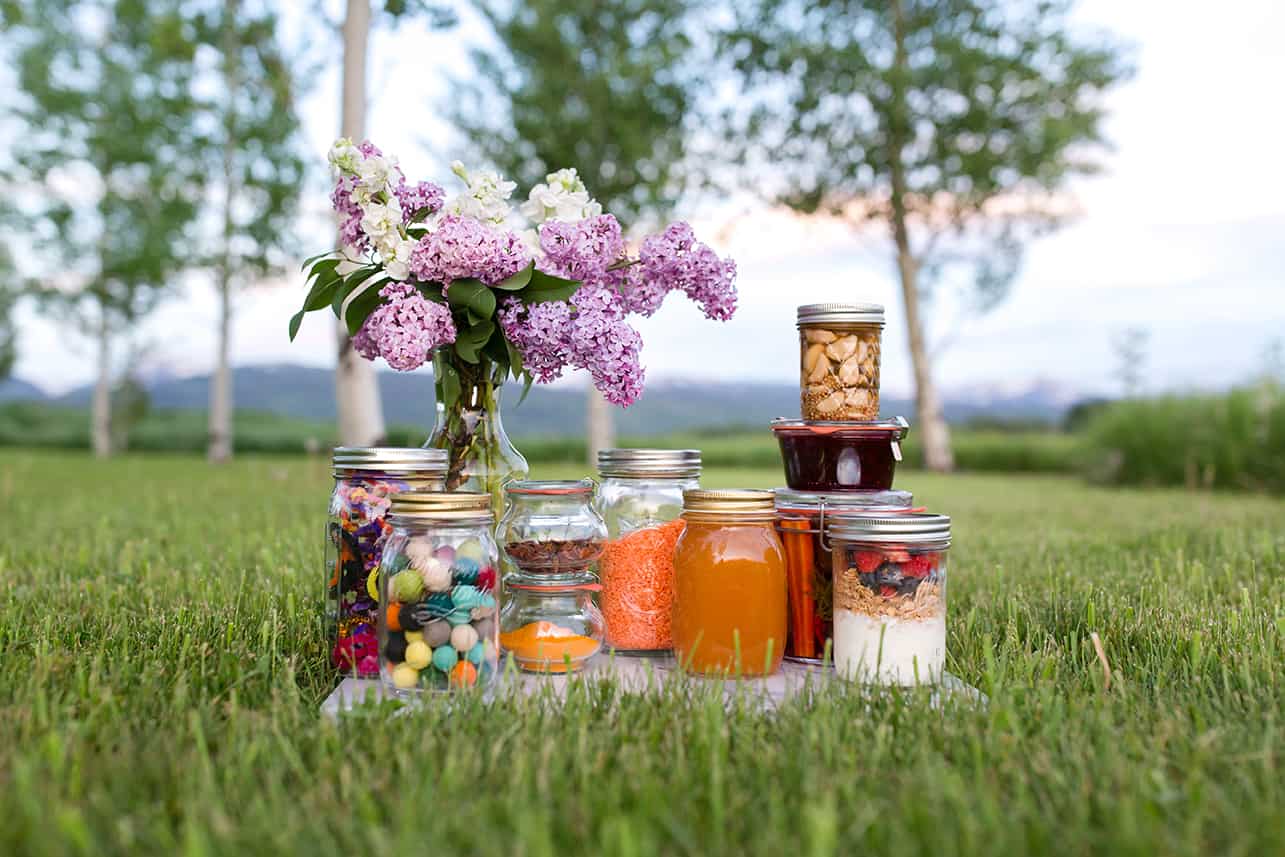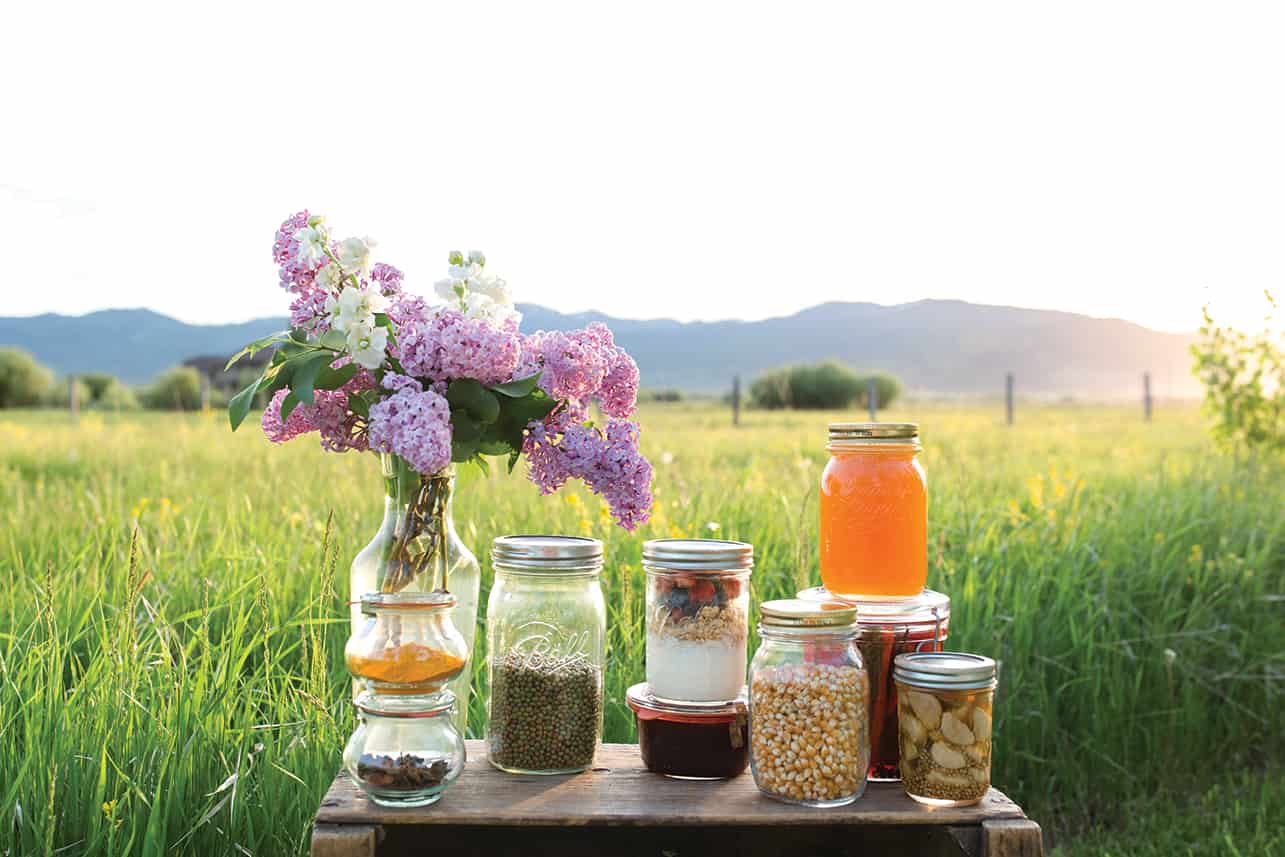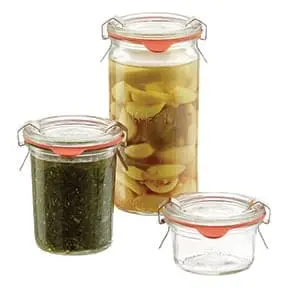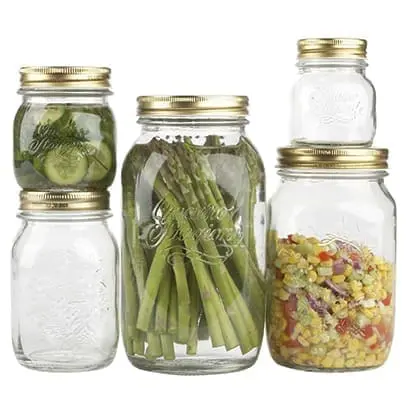By Christina Shepherd McGuire // Photography by Lara Agnew
—
My mom never canned. Blame it on the pre-packaged, better-than-whole-foods hype of the late 70s and 80s, but things that took time in that era were definitely not on the radar of hard-working women’s libbers.
Thankfully, I grew up in a household with deep Italian roots, so in between nights of hot dogs and Kraft Mac and Cheese dinners, my mom prepared big spreads of slow-cooked meals made from fresh summer ingredients, including lettuce (head-only back then), cucumbers, tomatoes, and peaches.
Today I perform my own ritual—one that resurrects the practices of my grandparents, really—of putting up fresh fruit and veggies when they’re in their prime. The act of canning and storing food in jars has created my obsession over what jars work (and look) best all done up with their food du jour. And while each one has its own special nuance, together on the shelf they bring back tastes and textures once reserved only for summer. Here’s my pick of the most utilitarian, and fashionable, jars on the block.
Weck
I’m slowly building up my collection of Weck jars (weckjars.com) for all things food. I use them for canning, storing bulk food items, and spice organization. But there’s no better gift than a jam or other canned item thoughtfully packaged in a blue-tinted Weck jar, complete with clips. You can be assured the recipient will enjoy using this decorative piece long after your gift is consumed.
How-To:
Weck jar assemblies consist of a jar, glass lid, rubber ring, and two stainless clips. To use them, first sterilize all the parts as you would traditional jars (I like to do so in the dishwasher). Keep your dishwasher closed until you’re ready to can, and then fill each hot jar with your prepared food item, leaving ¼-inch headroom at the top of the jars. Set the rubber rings into the groove on the lids and wipe the jars’ rims clean. Place the lids on top of your jars and affix the two metal clips on either side. Process the jars in a hot water bath for the recommended time.
Pros
- Highly decorative and available in many shapes and sizes.
- Glass is the only material that contacts your food ensuring better sanitation.
- Less wasteful—glass lids don’t wear out and rubber rings last.
- It’s easy to tell when your jar is sealed. The rubber tab on the jar angles down and the lid won’t come off, even without the clips.
Cons
- Weck jars, imported from Germany, are expensive.
- When used for bulk food storage, the clips and rubber ring can be cumbersome.
- They’re not USDA approved. This does not mean, however, that Weck jars aren’t safe. They just haven’t been formally tested stateside yet.
*Note: Since Weck jars come in metric sizes, you must first make the conversion from milliliters to ounces (or cups) before determining your processing time.
Ball
Nearly every grocery store carries Ball jars (ball.com) during canning season. In fact, we have so many in our house that they’ve become our lunch containers, smoothie glasses, and beer mugs. We store marbles, art supplies, Band Aids, and Q-tips in them. And if you come over for dinner, you’ll leave with leftovers packed inside this vessel.
How-To:
Canning with Ball jars couldn’t be easier. While most traditionalists like to boil their jars, lids, and rings before canning (just in case), I, again, suggest throwing them in the dishwasher. Then fill the pint- or quart-size wide-mouth jars with your prepared concoction and wipe the rims clean. Place the sterilized lids on top of the jars, screw on the rings with just enough tension to keep them in place (don’t tighten like you mean it), and then process them in a water bath.
Pros
- Available on-the-fly at almost any local grocery store.
- Most every canning recipe and USDA guide is suited toward these jars, making them extremely easy to use.
- Ball jars now come in a plethora of colors like red, blue, purple, and green.
Cons
- Wasteful—the lids and rings must be replaced after every use.
- The plastic seal on the lid contains BPAs, a harmful chemical that can leach into food at high temperatures.
- Ball jars can open and crack while processing, causing a mess.
*Note: If the rubber seals on your lids are scratched or ripped, or if the metal rings are rusty, throw them out and purchase new ones. The USDA recommends tossing lids after every use.
Bormioli Rocco Quattro Stagioni
As with anything Italian, Bormioli Rocco’s jars (bormiolirocco.com) were crafted with food in mind. The decorative glass inlay—complete with a beehive, butterflies, and grapevines—and one-part lid place them in a category of their own. Perfect for canned items that don’t require processing. These jars are easy to use and also look great housed with various items on open shelves. Plus, the Italians did it right, making a BPA-free lid seal.
How-To:
I use Quattro Stagioni jars for refrigerator pickles and jams, and for storing raw honey harvested from the hive. For refrigerator pickles, sterilize your jars and fill them with veggies and herbs. Prepare your salt brine on the stove and pour it into the jar, leaving ¼-inch headspace. Then pop your jars in the fridge for two weeks, turning them every few days to incorporate the brine and to set the flavor. For water-bath canning, sterilize and fill the jars, wipe the jar rims, screw on the lids until they stop spinning, and then process them accordingly. The jar is sealed when an indentation appears on the lid.
Pros
- Made in Parma, Italy, with a BPA-free design that’s family safe.
- The one-part lid provides easy access to stored items.
- You can purchase them online from Amazon, Target, or Bed Bath and Beyond.
Cons
- The jars are not supported for use in a pressure canner (water bath only).
- Wasteful—the lids need to be tossed after only one use.
- Quattro Stagioni jars aren’t USDA approved, again due to lack of U.S. testing.
Luigi Bormioli Lock-Eat
A relatively new kid on the block (launched in 2016), Luigi Bormioli’s Lock-Eat jars (luigibormioli.com) are fashioned from vintage bail-wire canning jars. The stylish design and Pyrex-like build of these Italian-crafted jars make the investment worthwhile. With the user in mind, Lock-Eat jars work brilliantly for both canning and storing: They stack neatly on top of each other with rimmed lids; the wire bails are easy to undo and remove; and the rubber gaskets stay in place after opening. Move over Weck (sorry), you’re Italian counterpart is here!
How-To:
Canning with Luigi Bormioli’s jars is similar to the Weck process. Sterilize all the jars and parts in the dishwasher. Fill the jars to the bottom of the glass band that encircles it. Wipe the rims clean and position the rubber gaskets on the lids, making sure to orient the tabs opposite the latch. Lock the bails, and process the jars for the recommended time.
Pros
- Don’t like to can? Lock-Eat jars are freezer and microwave safe, too.
- Unlike the old-school bail-wire jars, both the lids and wires are removable for ease of cleaning.
- Luigi Bormioli’s self-stacking design saves on storage space.
- Lock-Eat jars come in a variety of sizes and shapes, including a carafe for juice, tea, or a fresh bouquet of flowers.
Cons
- The Italian-made jars are costly, but worth every penny.
- Lock-Eat jars are heavier than most canning and storing jars.
*Note: As with all glass canning jars, make sure to run your finger around the rim of both the lid and the jar to check for cracks or chips before using.





